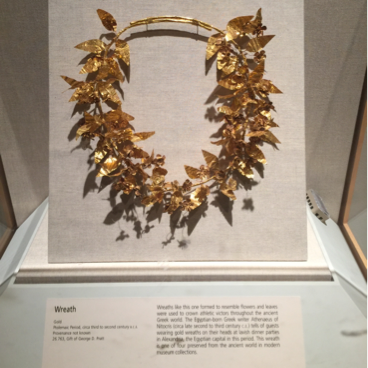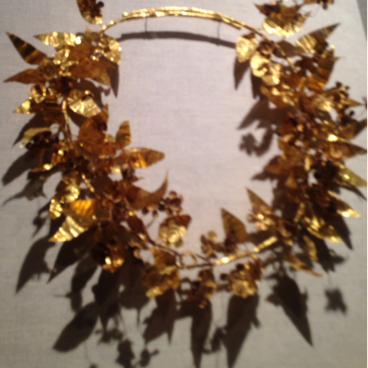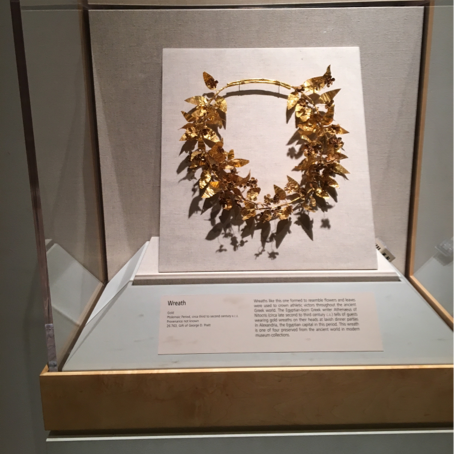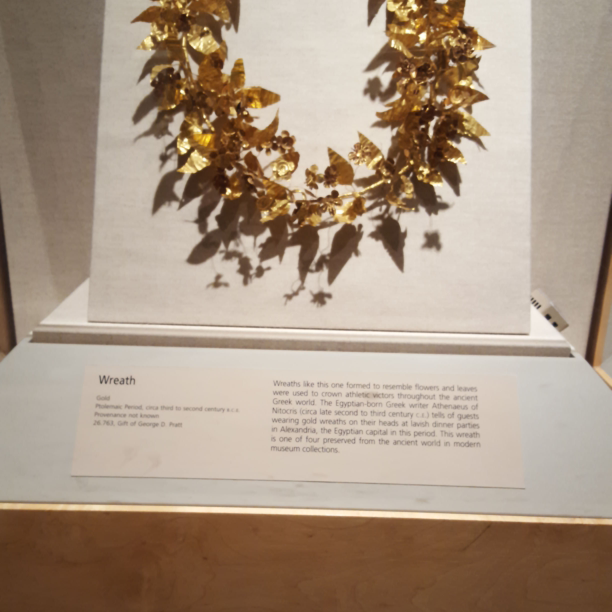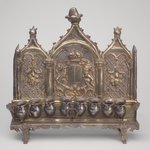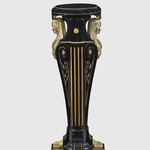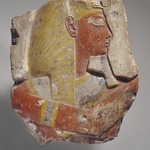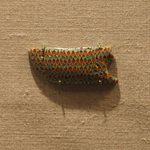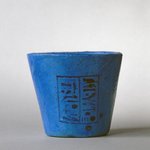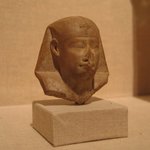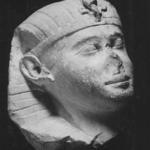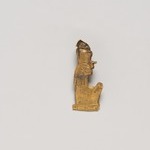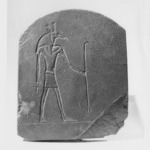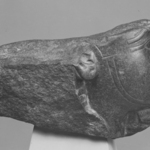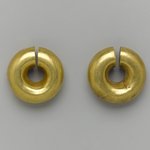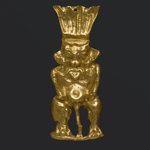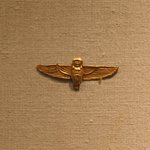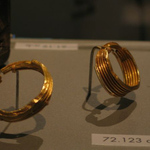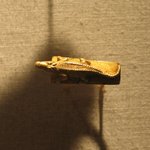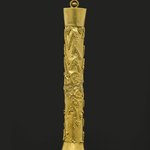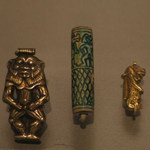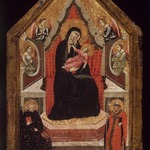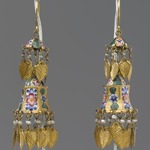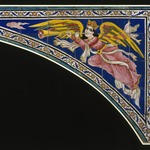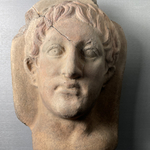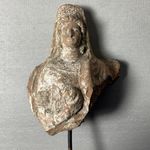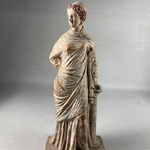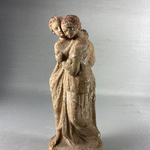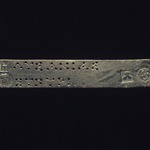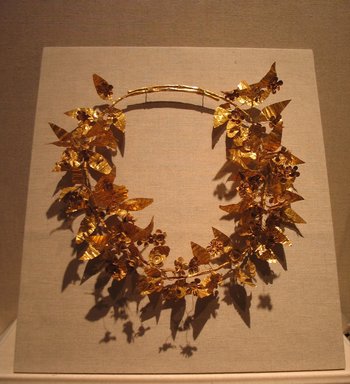
Wreath
Egyptian, Classical, Ancient Near Eastern Art
On View: 19th Dynasty to Roman Period, Martha A. and Robert S. Rubin Gallery, 3rd Floor
Wreaths like this one formed to resemble flowers and leaves were used to crown athletic victors throughout the ancient Greek world. The Egyptian-born Greek writer Athenaeus of Nitocris (circa late second to third century C.E.) tells of guests wearing gold wreaths on their heads at lavish dinner parties in Alexandria, the Egyptian capital in this period. This wreath is one of four preserved from the ancient world in modern museum collections.
CULTURE
Greek
MEDIUM
Gold
DATES
3rd century–2nd century B.C.E.
PERIOD
Ptolemaic Period
DIMENSIONS
3 15/16 x 10 1/4 x 11 13/16 in. (10 x 26 x 30 cm) (show scale)



COLLECTIONS
Egyptian, Classical, Ancient Near Eastern Art
ACCESSION NUMBER
26.763
CREDIT LINE
Gift of George D. Pratt
CATALOGUE DESCRIPTION
Gold funerary wreath, Greek, consisting of heavy tube apparently built over a core with long overlapping ends held together by three gold wires wound around tube. Major portion of tube decorated with ornate grouping of gold leaves with ridge running through center interspersed with bunches of conventionalized flowers. These groups held in place by means of small gold wires.
Condition: Excellent; tube appears to have been soldered in several places; some leaves and rosettes are loose.
MUSEUM LOCATION
This item is on view on the 19th Dynasty to Roman Period, Martha A. and Robert S. Rubin Gallery, 3rd Floor
CAPTION
Greek. Wreath, 3rd century–2nd century B.C.E. Gold, 3 15/16 x 10 1/4 x 11 13/16 in. (10 x 26 x 30 cm). Brooklyn Museum, Gift of George D. Pratt, 26.763. Creative Commons-BY (Photo: Brooklyn Museum, CUR.26.763_wwg8_2014.jpg)
IMAGE
installation, CUR.26.763_wwg8_2014.jpg. Brooklyn Museum photograph, 2015
"CUR" at the beginning of an image file name means that the image was created by a curatorial staff member. These study images may be digital point-and-shoot photographs, when we don\'t yet have high-quality studio photography, or they may be scans of older negatives, slides, or photographic prints, providing historical documentation of the object.
RIGHTS STATEMENT
Creative Commons-BY
You may download and use Brooklyn Museum images of this three-dimensional work in accordance with a Creative Commons license. Fair use, as understood under the United States Copyright Act, may also apply.
Please include caption information from this page and credit the Brooklyn Museum. If you need a high resolution file, please fill out our online application form (charges apply).
For further information about copyright, we recommend resources at the United States Library of Congress, Cornell University, Copyright and Cultural Institutions: Guidelines for U.S. Libraries, Archives, and Museums, and Copyright Watch.
For more information about the Museum's rights project, including how rights types are assigned, please see our blog posts on copyright.
If you have any information regarding this work and rights to it, please contact copyright@brooklynmuseum.org.
RECORD COMPLETENESS
Not every record you will find here is complete. More information is available for some works than for others, and some entries have been updated more recently. Records are frequently reviewed and revised, and we welcome any additional information you might have.


